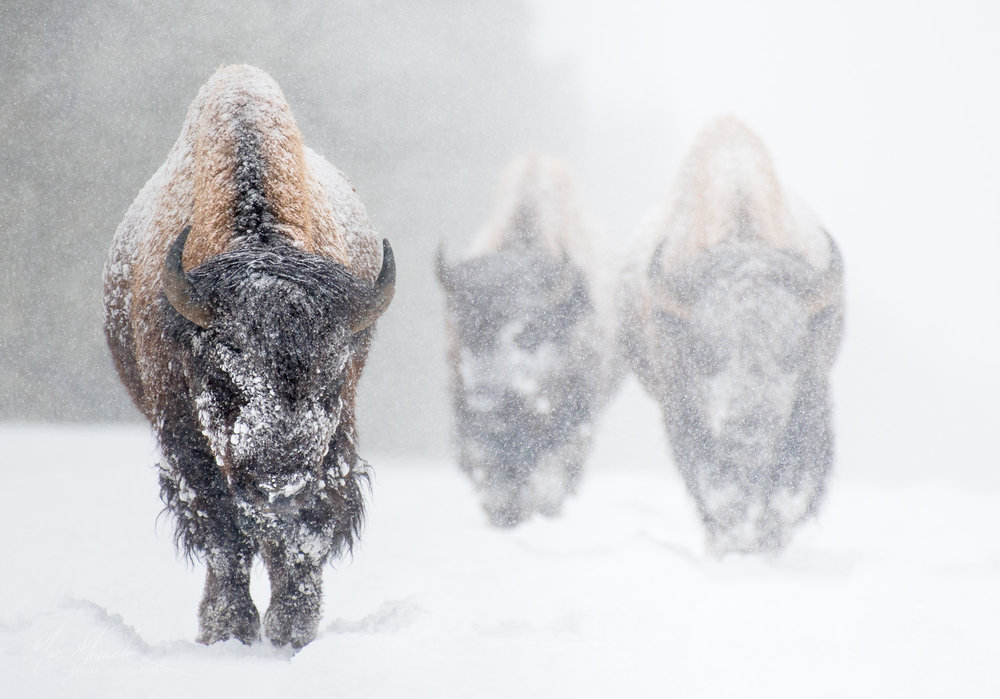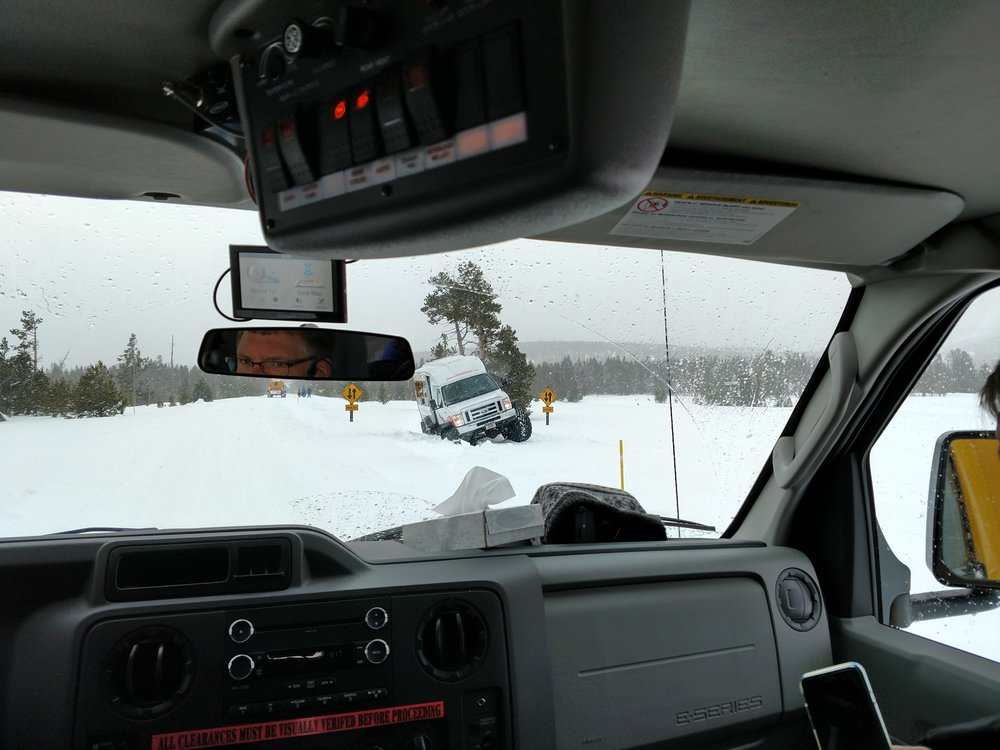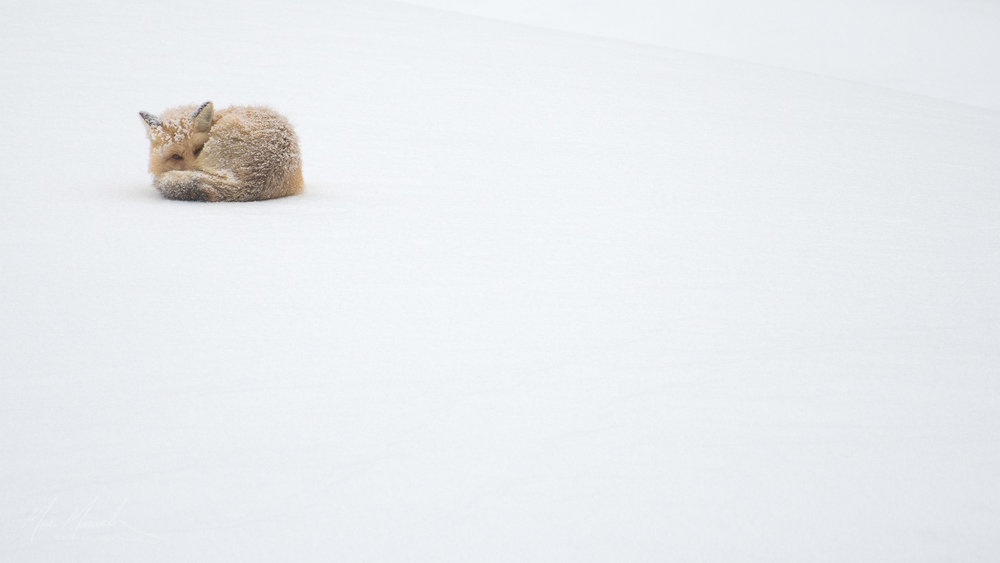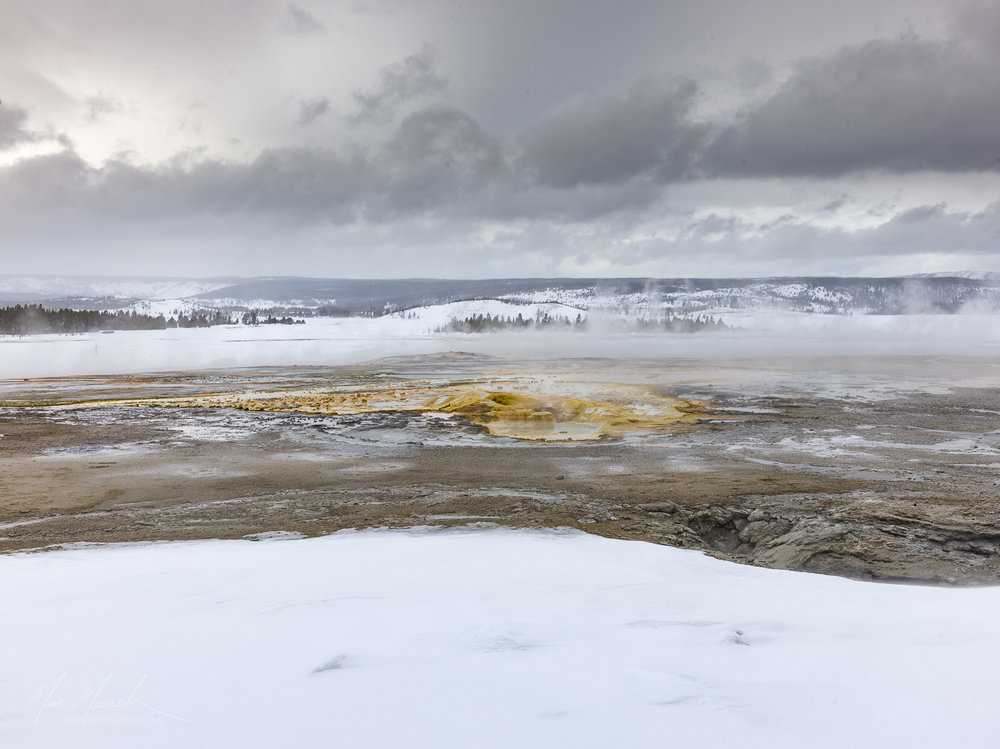What’s the first thing you think of when you consider Yellowstone? Old Faithful, of course! What’s amazing is that there is so much more to Yellowstone. I recently spent 7 days in the park and never even saw Old Faithful. After all, there are over 3,400 square miles of subalpine wilderness with the largest high-elevation lake in North America as well as herds of bison, elk, pronghorn, and rocky mountain sheep, making it the largest, most natural ecosystem in the northern temperate zone.

Established March 1, 1872 as the world’s first, Yellowstone National Park has become an example of what can be done to preserve a wild location in perpetuity through the National Park system. This may sound like a lofty ambition, but thus far it’s working. Whether or not the land will be preserved forever is something we’ll never know, but in the meantime we are fortunate enough to have lived in a time when this valuable resource is cherished.
It’s been 18 years since I was last in the park and I was excited this past month to rekindle my fondness of the place. I was very pleased to see that many aspects, landscapes, and visuals were just as I had remembered. In fact, I found the exact location and the very same rime covered trees where I had captured one of my favorite winter wildlife images 18 years ago on film. Back then the park was teaming with snowmobiles, snow coaches, and some other privately run tours. I recall hundreds of snowmobiles at times filling up the road with untrained drivers, and very loud engines that echoed off the canyon walls in many areas. While the privately guided snowmobile tours can still, at times, become congested, we were mostly by ourselves while on our private snow coach, cruising though the winter wonderland. Now the snowmobiles are controlled and special quiet engines are used to keep the noise level down. This, in conjunction with more strict guiding rules makes for a better environment for the visitors as well as the wildlife. We were constantly mesmerized by the ancient looking beasts, we now call bison. Their large heads and necks are used to brush away the deep snow, up to one meter deep. This year was a bit special for us photographers, since there was more snow on the ground than Yellowstone has seen in the past 10 years. This made it magical for landscapes and wildlife scenes, but a bit frustrating for the snow coach drivers who were getting stuck left and right. Fortunately, we had veteran driver Doug Hilborn, who has worked us for over 10 years. Doug knew where and where not to drive the coach, preventing us from ending up in a deep snow bank like many we passed.

The wildlife was distributed slightly differently than recent times, as the deep snow made it difficult for many of the animals to feed. There are vast regions of the park where little wildlife is spotted in the winter because there is no geothermal heat to melt the snow and provide adequate warmth to keep the food growing throughout the winter. This year, even certain normal feeding locations were covered in snow, making the wildlife scarce in some regions. The payoff was encountering more unusual sightings that were quite photogenic, such as this red fox sleeping in the middle of a snowfield.

What sets Yellowstone apart from many of the other National Parks is its large size, which can sustain greater numbers of wildlife and in a temperate climate where most thrive. The vast meadows near Hayden Valley are said to sustain one of the larger populations of brown bears in the lower 48 states. This combined with the alien looking geothermal features breaking up an already beautiful landscape make the park lands unique. In fact, there is no greater concentration of geothermal activity on the planet. The ongoing volcanism maintains these features and constantly updates the landscape with visible changes. Earthquakes change the plumbing of the geyser basins, forcing hot water and steam to change course.

While walking around the Fountain Paint Pot trail we were shocked to see that something was very different. Throughout the year, day in and day out, Clepsydra geyser erupts with very few interruptions. On the day we visited, Clepsydra geyser was not erupting. It was not much of a photo op, but fascinating to witness.

I’ve been to Africa many times in pursuit of wildlife and landscapes and each time am amazed by the variety of both. What I have recently learned is that the same flourishing variety is right here in my home country, and with many years of struggling stewardship behind us, the odds are ever greater that this ecosystem will last.
Life is short, create pictures!
Marc Muench
View Post on Original Blog
https://muenchworkshops.com/blog/photographing-yellowstone
